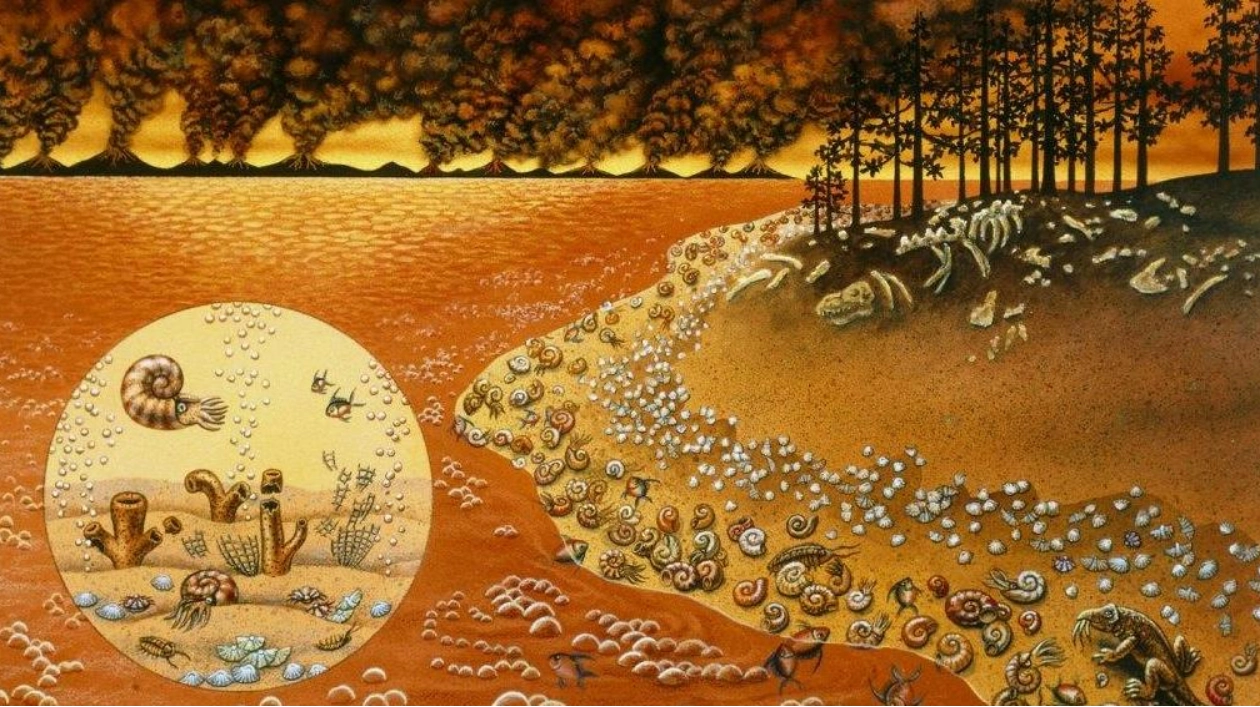A series of extreme and erratic climate shifts might have triggered the most significant mass extinction event in Earth's history. A reconstruction of ancient sea surface temperatures, ocean and atmosphere circulation, and landmasses showed an Earth beset by nearly decade-long periods of droughts, wildfires, and flooding. Researchers had previously identified a surge in global temperatures—caused by gas emissions from massive volcanic eruptions in present-day Siberia—as the probable cause of a mass extinction approximately 252 million years ago. However, it was the catastrophic "mega El Niños" that wreaked havoc on ecosystems, leading to the extinction of about 90 percent of ocean species and 75 percent of land species, according to a study published in Science on September 13.
Science News is gathering reader questions about navigating our planet's changing climate. What do you want to know about extreme heat and its role in extreme weather events? "The findings contribute to a more nuanced understanding of the extinction than we previously appreciated," says Erik Gulbranson, a sedimentary geochemist at Gustavus Adolphus College in Saint Peter, Minnesota, who was not involved in the study. Researchers have long wondered why the Great Dying, which occurred at the boundary of the Permian and Triassic periods, was so devastating for life on Earth. "We have intense global warming, but other episodes of global warming in the geological record didn't cause such severe damage to ecosystems," says paleontologist David Bond at the University of Hull in England.
While a sharp increase in sea surface temperature and the subsequent collapse in the warmer ocean's ability to hold dissolved oxygen would have been disastrous for marine organisms, it wasn't clear what drove the extinction of land life or why these organisms couldn't migrate to cooler polar regions. Part of the answer might lie in shorter-term oscillations in paleoclimate. "Species care about climate, but they also care deeply about weather," says Alexander Farnsworth, a paleoclimate modeler at the University of Bristol in England. These variations include climate fluctuations on the scale of years rather than hundreds of millennia or more. For example, today's El Niño-Southern Oscillation—a periodic warming of the tropical Pacific Ocean that brings heat and aridity to northern North America, dampens the Atlantic hurricane season, and induces droughts and floods globally—lasts about a year.
Farnsworth, Bond, and an international team of colleagues reconstructed these climate patterns from over 250 million years ago. The team calculated seawater temperatures using ratios of different forms of oxygen in the fossilized teeth of conodonts, ancient fish-like animals. With this data and newly updated computer simulations of Earth's atmospheric and ocean circulation patterns, the team produced a more cohesive picture of climate during the Great Dying. This was aided by a more precise understanding of what continents and ocean basins looked like at the end of the Permian, which influences global atmospheric and ocean circulation. When carbon dioxide levels initially doubled from about 410 to 860 parts per million and global temperatures rose, the El Niño-like warming spells originating mostly over the late Permian's giant ocean, Panthalassia, intensified, the team found. Over time, these swings lengthened, sometimes stretching for nearly a decade.
The effects of these mega El Niños would have been too much for land organisms to endure. As carbon dioxide-absorbing forests withered and died, fewer greenhouse gases were removed from the atmosphere, creating a self-perpetuating cycle as volcanoes continued to emit warming gases. "You get more warming, more vegetation die-off, stronger El Niños, higher global temperatures, and higher weather extremes, leading to more die-off," says Farnsworth. Large areas of the globe would have experienced alternating periods of scorching heat, drought, and fire, followed by dramatic flooding. The heat eventually spread to higher latitudes, leaving few places to escape the increasingly hostile atmosphere. "It became very hot everywhere, and that's why species couldn't simply migrate north and south," Bond says.
Ultimately, many species couldn't adapt to this climate roller coaster. Now that the findings provide a higher-resolution picture of how warming precipitated a mass extinction at the end of the Permian, there may be a way to see these rapid climate fluctuations in the fossil record itself. Gulbranson points out that annual records preserved in fossil cave stalactites and tree rings might show evidence of the mega El Niños. "We need to track down these signals in the fossil record. We need to see them in the organisms that lived and went through the extinction," he says. Going forward, Bond is curious about what intrinsic physical and ecosystem features made certain periods in Earth's history more resilient to climate chaos and others more vulnerable to mass extinction.
Questions or comments on this article? E-mail us at feedback@sciencenews.org | Reprints FAQ Y. Sun et al. Mega El Niño instigated the end-Permian mass extinction. Science. Vol. 385, September 13, 2024, p. 1189. doi: 10.1126/science.ado2030 Jake Buehler is a freelance science writer, covering natural history, wildlife conservation, and Earth's splendid biodiversity, from salamanders to sequoias. He has a master's degree in zoology from the University of Hawaii at Manoa. We are at a critical time, and supporting climate journalism is more important than ever. Science News and our parent organization, the Society for Science, need your help to strengthen environmental literacy and ensure that our response to climate change is informed by science.
Please subscribe to Science News and add $16 to expand science literacy and understanding.






